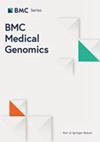Construction of a molecular diagnostic system for neurogenic rosacea by combining transcriptome sequencing and machine learning
IF 2.1
4区 医学
Q3 GENETICS & HEREDITY
引用次数: 0
Abstract
Patients with neurogenic rosacea (NR) frequently demonstrate pronounced neurological manifestations, often unresponsive to conventional therapeutic approaches. A molecular-level understanding and diagnosis of this patient cohort could significantly guide clinical interventions. In this study, we amalgamated our sequencing data (n = 46) with a publicly accessible database (n = 38) to perform an unsupervised cluster analysis of the integrated dataset. The eighty-four rosacea patients were partitioned into two distinct clusters. Neurovascular biomarkers were found to be elevated in cluster 1 compared to cluster 2. Pathways in cluster 1 were predominantly involved in neurotransmitter synthesis, transmission, and functionality, whereas cluster 2 pathways were centered on inflammation-related processes. Differential gene expression analysis and WGCNA were employed to delineate the characteristic gene sets of the two clusters. Subsequently, a diagnostic model was constructed from the identified gene sets using linear regression methodologies. The model's C index, comprising genes PNPLA3, CUX2, PLIN2, and HMGCR, achieved a remarkable value of 0.9683, with an area under the curve (AUC) for the training cohort's nomogram of 0.9376. Clinical characteristics from our dataset (n = 46) were assessed by three seasoned dermatologists, forming the NR validation cohort (NR, n = 18; non-neurogenic rosacea, n = 28). Upon application of our model to NR diagnosis, the model's AUC value reached 0.9023. Finally, potential therapeutic candidates for both patient groups were predicted via the Connectivity Map. In summation, this study unveiled two clusters with unique molecular phenotypes within rosacea, leading to the development of a precise diagnostic model instrumental in NR diagnosis.结合转录组测序和机器学习构建神经源性酒渣鼻分子诊断系统
神经源性红斑痤疮(NR)患者经常表现出明显的神经系统症状,通常对传统治疗方法无反应。对这一患者群进行分子水平的了解和诊断可为临床干预提供重要指导。在这项研究中,我们将我们的测序数据(n = 46)与一个可公开访问的数据库(n = 38)合并,对整合后的数据集进行无监督聚类分析。八十四名酒糟鼻患者被分为两个不同的群组。与第 2 组相比,第 1 组的神经血管生物标记物含量更高。第 1 组的通路主要涉及神经递质的合成、传递和功能,而第 2 组的通路则以炎症相关过程为中心。差异基因表达分析和 WGCNA 被用来划分两个群组的特征基因组。随后,利用线性回归方法从确定的基因组中构建了诊断模型。由基因 PNPLA3、CUX2、PLIN2 和 HMGCR 组成的模型的 C 指数达到了 0.9683,训练队列提名图的曲线下面积(AUC)为 0.9376。我们数据集中的临床特征(n = 46)由三位经验丰富的皮肤科医生进行评估,形成了 NR 验证队列(NR,n = 18;非神经源性酒渣鼻,n = 28)。将我们的模型应用于 NR 诊断时,模型的 AUC 值达到了 0.9023。最后,通过连接图预测了两组患者的潜在候选疗法。总之,这项研究揭示了红斑痤疮中两个具有独特分子表型的群组,从而建立了一个有助于NR诊断的精确诊断模型。
本文章由计算机程序翻译,如有差异,请以英文原文为准。
求助全文
约1分钟内获得全文
求助全文
来源期刊

BMC Medical Genomics
医学-遗传学
CiteScore
3.90
自引率
0.00%
发文量
243
审稿时长
3.5 months
期刊介绍:
BMC Medical Genomics is an open access journal publishing original peer-reviewed research articles in all aspects of functional genomics, genome structure, genome-scale population genetics, epigenomics, proteomics, systems analysis, and pharmacogenomics in relation to human health and disease.
 求助内容:
求助内容: 应助结果提醒方式:
应助结果提醒方式:


